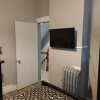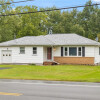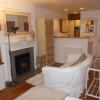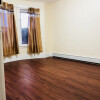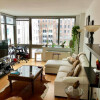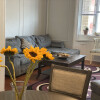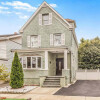Living in the district / neighbourhood Flushing in New York
About the district / neighbourhood Flushing in New York
Flushing, located in northern Queens, New York City, is one of the borough’s most vibrant and diverse neighborhoods. Known for its bustling streets, cultural landmarks, and extensive history, Flushing has evolved into a major commercial and residential hub. It boasts a rich mix of cultures, with significant populations of Chinese, Korean, Indian, and Latin American residents, making it one of the most diverse communities in New York City. History of Flushing
Founded in 1645 by Dutch settlers, Flushing was originally part of the New Netherland colony and was named after the Dutch town of Vlissingen. In its early history, Flushing was a key site for religious tolerance. The Flushing Remonstrance of 1657, signed by English residents, demanded religious freedom in the face of persecution, particularly for Quakers. This document laid the foundation for the American principles of freedom of religion.
In the 19th and early 20th centuries, Flushing was a suburban retreat for Manhattan’s wealthy, and it gradually developed into a dense, urbanized neighborhood. The construction of the Queensboro Bridge and the IRT Flushing Line (7 train) in the early 20th century connected Flushing directly to Manhattan, fostering its growth as a major residential and commercial center. Landmarks and Points of Interest
Flushing Meadows–Corona Park: Flushing Meadows–Corona Park is one of the most famous landmarks in Queens and borders Flushing to the south. The park, created for the 1939 and 1964 World’s Fairs, is New York City’s fourth-largest park, covering over 1,200 acres. The Unisphere, a massive steel globe from the 1964 World’s Fair, is the park’s most iconic feature. Flushing Meadows is also home to the USTA Billie Jean King National Tennis Center, where the US Open tennis tournament is held annually, drawing visitors from all over the world. Other attractions in the park include the Queens Museum, New York Hall of Science, and Queens Zoo.
Flushing Town Hall: Flushing Town Hall, located on Northern Boulevard, is a historic building that dates back to 1862. It originally served as the town's government center but now functions as a cultural venue offering concerts, art exhibitions, and educational programs. The hall is part of the Smithsonian Institution's Affiliations Program, reflecting its importance as a cultural hub for the neighborhood. It plays a central role in preserving the area’s rich cultural heritage while showcasing contemporary art and performances from local and international artists.
Queens Botanical Garden: Situated just south of downtown Flushing, the Queens Botanical Garden is a 39-acre green oasis in the heart of the city. Originally created for the 1939 World’s Fair, the garden features diverse plant collections, eco-friendly landscapes, and sustainable building designs. It offers a tranquil space for visitors to enjoy seasonal blooms, including roses, cherry blossoms, and perennials, as well as environmental education programs and community events.
St. George’s Church: St. George’s Church, located on Main Street, is one of the oldest churches in Queens, dating back to 1702. The current Gothic Revival building, constructed in 1854, has been a spiritual center for the community for centuries. The church is listed on the National Register of Historic Places and is known for its striking architecture, stained glass windows, and cemetery, which contains the graves of prominent early settlers. St. George’s continues to be an active parish, serving the spiritual and community needs of Flushing’s diverse population.
Murray Hill: Murray Hill is a residential section of Flushing, known for its beautiful Victorian homes, many of which are over a century old. The tree-lined streets of this area offer a contrast to the bustling commercial parts of downtown Flushing. Some of the homes are historically significant and part of Flushing’s architectural heritage, making it a peaceful yet charming area for a stroll.
Kissena Park: Just east of Flushing’s downtown area lies Kissena Park, a large green space that offers recreational facilities, walking trails, a pond, and sports fields. The park is named after the Native American word for "it is cold," likely referring to Kissena Lake, which remains one of the park’s central attractions. With its serene atmosphere, Kissena Park is a favorite spot for locals who want to enjoy nature, engage in recreational activities, or simply relax.
Flushing Chinatown: Flushing is home to one of the largest and fastest-growing Chinatowns in New York City, even surpassing Manhattan’s Chinatown in size and vibrancy. The heart of Flushing Chinatown is along Main Street and Roosevelt Avenue, where visitors can find a wide array of authentic Asian markets, restaurants, and shops. The neighborhood is a cultural and culinary hotspot, offering everything from dim sum to Korean BBQ, bubble tea, and more. The Lunar New Year Parade in Flushing draws crowds from across the city and is a major event on the community’s calendar.
Conclusion
Flushing is a dynamic and culturally rich neighborhood, home to iconic landmarks like Flushing Meadows–Corona Park, Queens Botanical Garden, and Flushing Town Hall. Its deep historical roots and diverse population make it one of the most interesting and unique neighborhoods in New York City. Whether enjoying the green spaces of Kissena Park, exploring the vibrant Chinatown, or visiting historical sites like St. George’s Church, Flushing offers a blend of history, culture, and modern urban life that reflects the heart of Queens.

